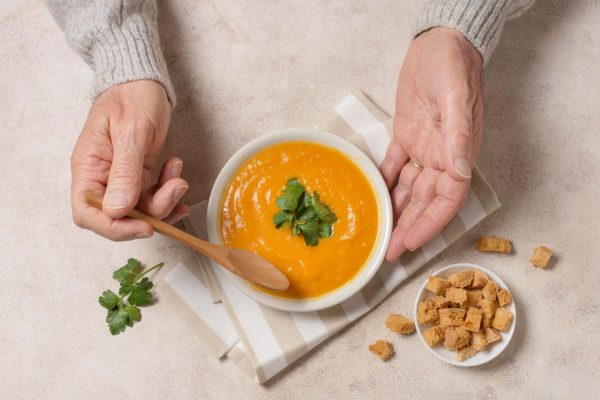Just about everyone knows a high sodium diet is bad for blood pressure and, therefore, bad for heart health. That’s one of the key reasons people make the effort to avoid salty foods like chips, French fries, processed meats and pizza.
The problem is, there is a lot of added sodium in foods that don’t even taste salty, and others that simply sound healthy.
Surprisingly, bread is at the top of the high sodium food list. It doesn’t taste salty, but a single slice of bread can contain 100 – 200 mg of sodium.
While that may not sound like a lot, let’s put it into perspective. Arnold’s 100% Whole Wheat bread contains 160 mg of sodium per slice. And maybe you have two slices of toast with breakfast, followed by a sandwich made with two slices of bread at lunch.
You’re already up to 640 mg of sodium for the day in bread alone!
Now, the American Heart Association recommends no more than 2,300 mg a day. But they are moving toward an ideal limit of no more than 1,500 mg a day for most adults
At the ideal limit of less than 1,500 mg daily, those four slices of bread have already taken up 42.5% of your daily intake of sodium. (And that doesn’t count whatever sodium was in the food you ate with your toast, or the inner contents of the sandwich.)
Bagels, French bread, croutons, croissants and pita bread are even bigger offenders.
Canned soups are another sodium bomb – even when they sound super healthy. (And who doesn’t like enjoy a nice slice of French bread or a few croutons with a bowl of soup!)
For example, organic foods can contain just as much unhealthy sodium as their mainstream counterparts. Annie’s Organic Soups are a great example of this.
One serving of Annie’s Organic Tomato Soup contains 680 mg of sodium. A can of Campbells Tomato Soup? It contains 480 mg of sodium. Who would’ve guessed that the more commercial brand would have the lower number?
The funny thing about canned soups is that they usually contain two servings. But most people eat the whole can at once. In that case, you need to double those numbers.
About that Store-Bought Rotisserie Chicken…
Whenever I stop into Costco, they always have a sale on the rotisserie chickens they roast in the deli. And they fly off the shelves!
But the way stores cook their chickens is quite a bit different than the way you cook them at home. They inject them with a solution that contains huge amounts of sodium, along with sugar and other processed ingredients. This is to keep them nice and moist while they’re cooking.
That’s a problem, because Costco’s rotisserie chicken has 460 mg of sodium for each 3-ounce serving.
Sticking to the ideal limit of no more than 1,500 mg of sodium daily, a single 3-ounce serving will put you at nearly a third of your daily allotment. But chances are, since you bought the whole bird, you’ll eat more than one serving a day (and probably even more than one serving in a single sitting). So that’s an issue.
Even the Little Things Count
One thing people don’t realize is how much sodium they get from “the little things.”
Most condiments are deceptively high in sodium. Commercial salad dressings often sport well over 440 mg per two-tablespoon serving. Barbeque sauce can deliver upwards of 300 mg in a two-tablespoon serving. (But honestly, does anyone actually measure out exactly two tablespoons of barbeque sauce for their ribs and chicken – or do they just slather it on?)
Soy sauce is the absolute worst. A single tablespoon can contain over 1,000 mg of sodium.
Hot sauces, wing sauces, cheese sauces and other dipping sauces can be just as bad.
But the list doesn’t stop there.
Don’t forget about the hefty sodium content in healthy sounding frozen meals and sides, veggie burgers, canned vegetables, sports drinks and vegetable juices. All of them are loaded with the stuff! Restaurant foods are big offenders too. All of this makes it really easy to blow your salt intake before the day is even half over.
Ultimately, NEVER assume something is low sodium just because it sounds healthy, or because it doesn’t taste salty.
ALWAYS check your nutrition panels before purchasing a product. And don’t forget to check the serving size. Often times, something that looks like a single serving could contain three or four servings. So you have to multiply sodium content by that amount if you plan to eat it all.
SOURCES:
Vital Signs: Where’s the sodium? Centers for Disease Control and Prevention. Last updated Feb 2012.
Is Store-Bought Rotisserie Chicken Good for You? News Report. Consumer Reports. Mar 2021.



